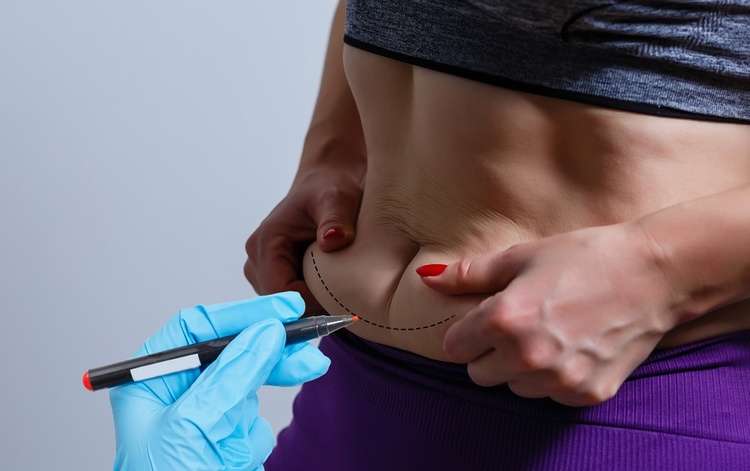Laser Fat Removal: How It Works and What to Expect in 2025
Laser fat removal has become an increasingly popular non-surgical option for body contouring, offering people a way to target stubborn fat deposits without invasive procedures. As technology continues to advance, 2025 brings new developments in laser lipolysis techniques and improved patient outcomes. This minimally invasive treatment uses targeted laser energy to break down fat cells, which are then naturally eliminated by the body's lymphatic system over several weeks following the procedure.

What Is Laser Lipolysis?
Laser lipolysis is a cosmetic procedure that uses laser energy to liquefy fat cells in targeted areas of the body. Unlike traditional liposuction, this technique involves inserting a thin laser fiber through small incisions to deliver controlled heat directly to fat deposits. The laser energy disrupts the fat cell membranes, causing them to release their contents, which are then processed and eliminated by the body naturally. This process also stimulates collagen production, which can help tighten the skin in treated areas. The procedure is typically performed under local anesthesia and is considered less invasive than surgical alternatives, making it an attractive option for patients seeking body contouring with minimal downtime.
How Laser Fat Removal Works
The laser fat removal process begins with the administration of local anesthesia to ensure patient comfort throughout the treatment. A qualified practitioner then makes small incisions, typically less than 3mm in size, through which a thin laser fiber is inserted beneath the skin. The laser delivers controlled thermal energy at specific wavelengths, usually between 924 and 975 nanometers, which are particularly effective at targeting fat cells. This energy heats the fat cells to approximately 42-47 degrees Celsius, causing the cell walls to break down and release stored fat. The liquefied fat is either gently suctioned out during the procedure or left to be naturally metabolized by the body’s lymphatic system. The laser energy also promotes collagen remodeling, which helps improve skin texture and firmness in the treated area over the following months.
Common Treatment Areas
Laser fat removal can effectively target various areas of the body where stubborn fat deposits commonly accumulate. The abdomen and flanks, often referred to as love handles, are among the most frequently treated areas due to their tendency to store resistant fat. The procedure is also commonly performed on the thighs, both inner and outer areas, to address concerns about thigh gaps or overall leg contouring. Arms, particularly the upper arms where fat can create a “bat wing” appearance, respond well to laser lipolysis treatment. The neck and chin area have become increasingly popular treatment sites, especially with the rise of minimally invasive facial contouring procedures. Additional areas that can benefit from laser fat removal include the back, specifically the bra line area, and the buttocks for enhanced shaping and lifting effects.
What to Expect During and After the Procedure
During the laser fat removal procedure, patients typically experience minimal discomfort due to local anesthesia. The treatment usually takes between one to three hours, depending on the size and number of areas being treated. Patients remain awake and comfortable throughout the process, often describing sensations of warmth or mild pressure rather than pain. Following the procedure, patients can expect some swelling, bruising, and tenderness in the treated areas, which typically subsides within one to two weeks. Most people can return to work within a few days, though strenuous exercise should be avoided for approximately two weeks. Results become gradually visible as swelling decreases and the body eliminates the disrupted fat cells, with optimal results typically appearing three to six months after treatment. Patients are usually required to wear compression garments for several weeks to support the healing process and help achieve optimal contouring results.
Average Cost in 2025
The cost of laser fat removal varies significantly based on geographic location, the size of treatment areas, and the number of sessions required. Treatment pricing is typically calculated per area, with smaller areas like the chin costing less than larger areas such as the abdomen or thighs. The complexity of the case and the reputation of the practitioner or clinic also influence pricing structures.
| Treatment Area | Typical Price Range | Session Requirements |
|---|---|---|
| Chin/Neck | $2,000 - $4,500 | 1-2 sessions |
| Arms | $3,000 - $6,000 | 1-2 sessions |
| Abdomen | $4,000 - $8,000 | 1-3 sessions |
| Thighs | $3,500 - $7,000 | 1-2 sessions |
| Multiple Areas | $6,000 - $15,000 | 2-4 sessions |
Prices, rates, or cost estimates mentioned in this article are based on the latest available information but may change over time. Independent research is advised before making financial decisions.
Many practices offer financing options or package deals for multiple treatment areas, which can help make the procedure more accessible to patients. Insurance typically does not cover laser fat removal since it is considered a cosmetic procedure rather than a medical necessity.
Laser fat removal continues to evolve as a safe and effective option for body contouring in 2025. While results vary among individuals, most patients experience noticeable improvements in their body shape and skin texture. Success depends largely on realistic expectations, proper candidate selection, and choosing a qualified practitioner with experience in laser lipolysis techniques. As with any cosmetic procedure, thorough consultation and research are essential for achieving satisfactory outcomes.
This article is for informational purposes only and should not be considered medical advice. Please consult a qualified healthcare professional for personalized guidance and treatment.




